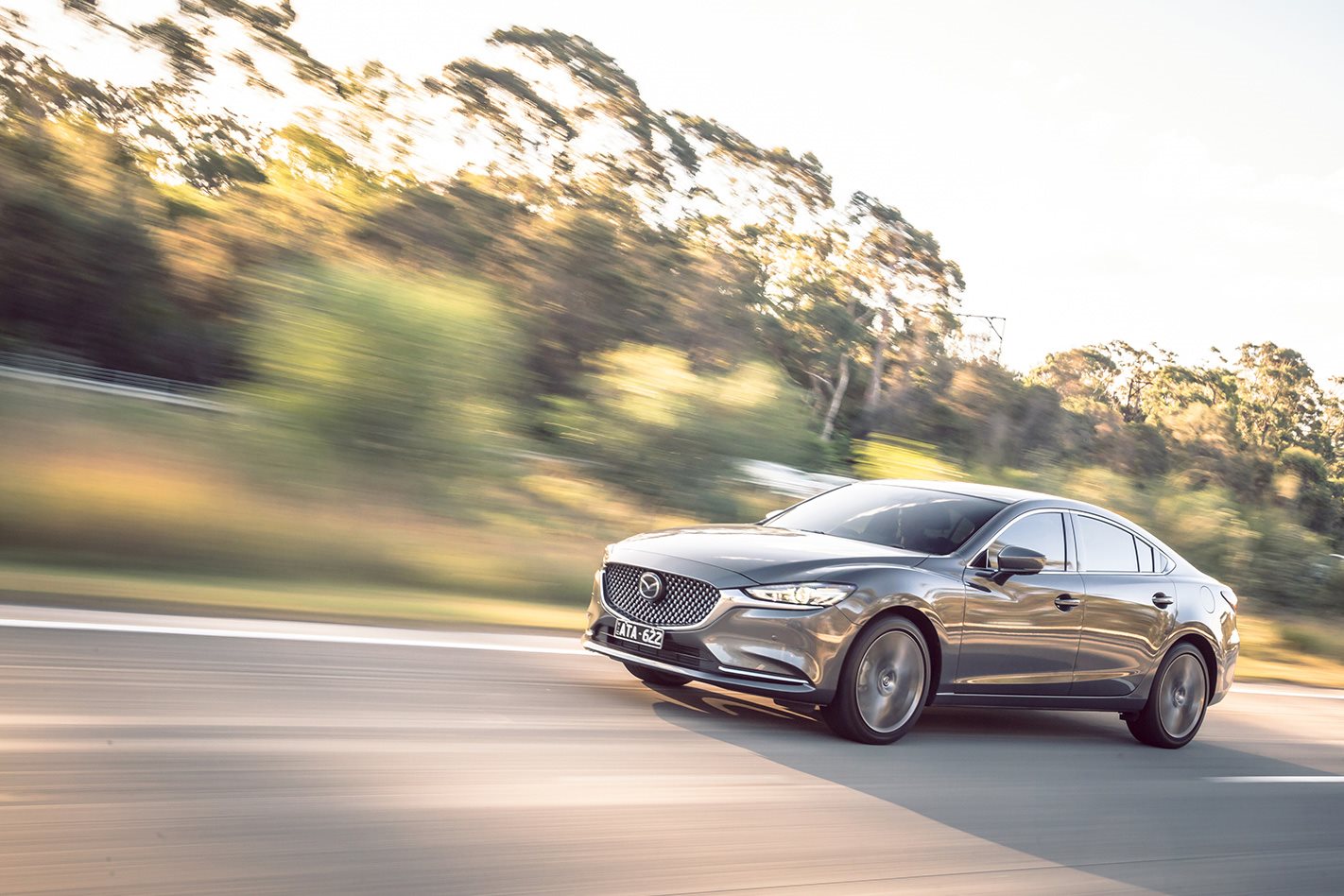WHAT IS IT?
Mazda has lifted the turbocharged engine from its 2017 Wheels Car of the Year-winning CX-9 SUV and slotted it into up-spec versions of the heavily facelifted 2018 Mazda 6 range, in conjunction with a swathe of engineering and aesthetic changes to its mid-size sedan and wagon.
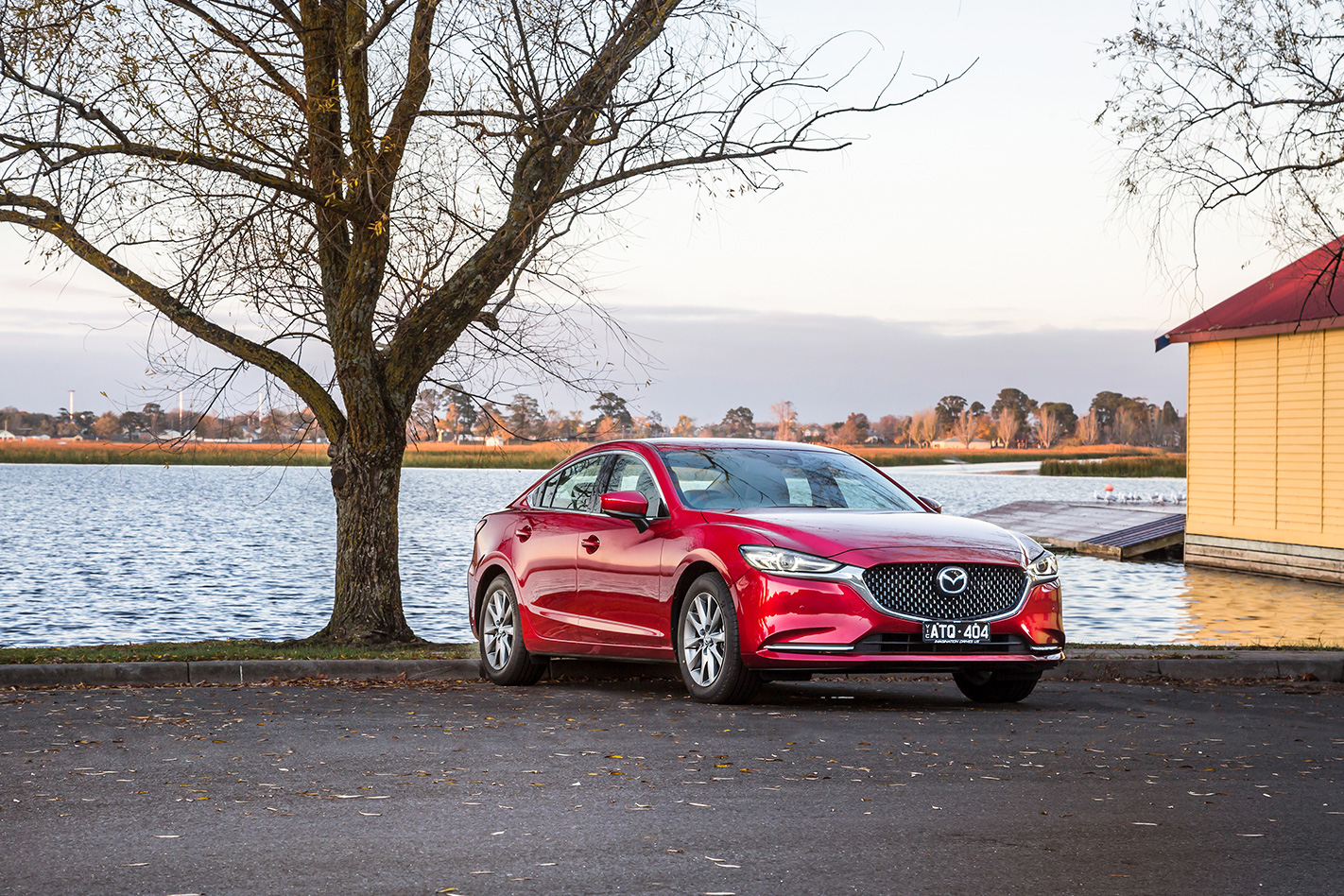
WHY WE’RE DRIVING IT
It’s the first turbocharged Mazda 6 since the short-lived, manual-only 2005-07 MPS that made 190kW/380Nm from its 2.3-litre four-cylinder mill. In 2018, this facelifted mid-sizer’s 2.5-litre turbo-petrol four punches out 170kW/420Nm – the same as it does in the 200kg-plus heavier CX-9 SUV this engine was initially developed for.
MAIN RIVALS
Ford Mondeo Titanium, Holden Commodore/Calais, Honda Accord V6L, Hyundai Sonata Premium; Kia Optima GT, Skoda Superb, Subaru Liberty 3.6R, Toyota Camry SL V6, Volkswagen Passat
THE WHEELS VERDICT
The introduction of Mazda’s superb turbo engine is the icing on the cake for the much-improved 6 line-up. Finally, after five years of the current generation model, we get the car we really wanted from the start.
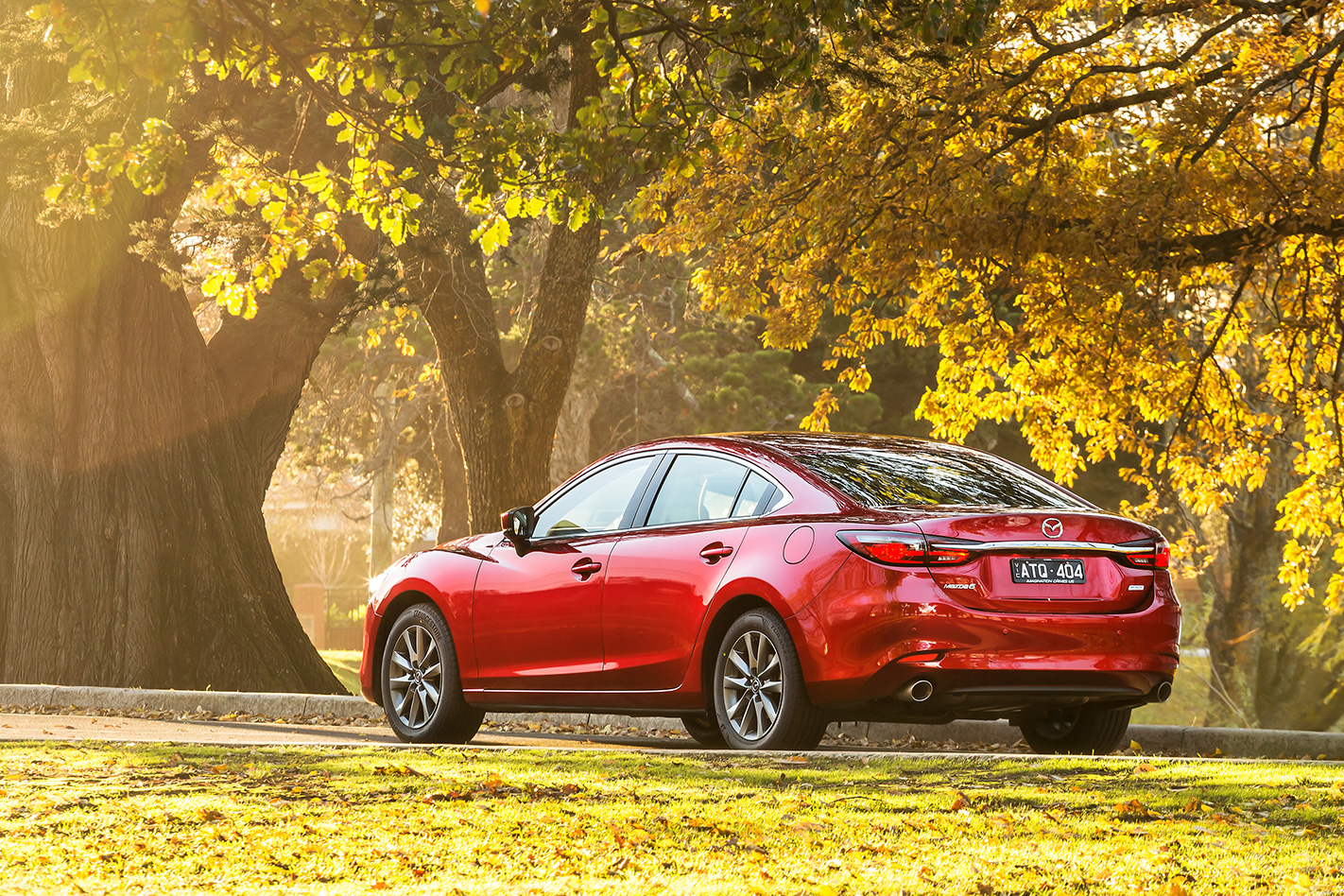
PLUS:Greatly improved NVH and dynamics; more willing engine; big lift in interior’s perceived quality; largely unchanged pricing MINUS: Turbo not available on base models; keeping the white suede-like interior trim clean; no turbo manual for Australia
THE WHEELS REVIEW
“YOU’VE asked for it, and we’ve delivered it.” That’s how Mazda Australia kicked off the launch of its significantly overhauled medium-size sedan and wagon range, adding a turbocharged engine option for the first time since the short-lived, manual-only Mazda 6 MPS (2005-07) huffed its way into the history books.
But this isn’t just any turbocharged engine. It’s the same one that powered the larger, heavier front- and all-wheel drive Mazda CX-9 to our 2017 Car of the Year title. It was there that judges discovered that the boosted 2.5-litre Skyactiv-G donk, making 170kW/420Nm, provided vast dollops of silky torque that yielded what was described as “performance once reserved for muscle sedans”. To say we went into this launch with big expectations of what this new-age forced induction would do for the 6, then, is something of an understatement.
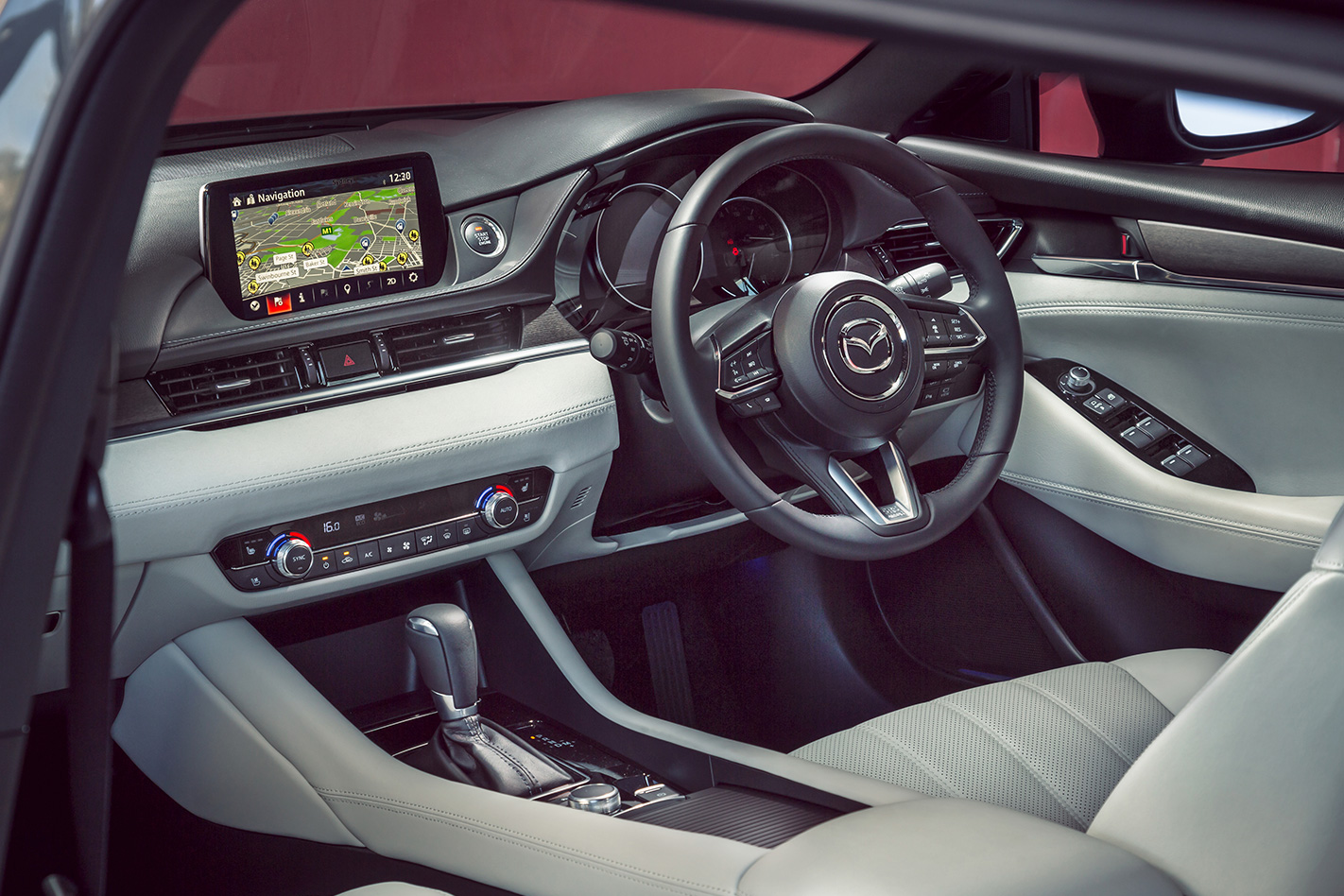
Producing the same outputs as in the CX-9 (though 184kW if you feed it 98-octane fuel), this turbocharged debut is but one of a series of sweeping changes to the 6 range. The most significant is a new look forward of the wing mirrors that pays homage to the Mazda Vision Coupe unveiled at the 2017 Tokyo Motor Show (which we all mistakenly thought would spawn a next-gen RX-8). The rear, too, gains a more handsome, lateral makeover and larger exhausts.
Inside, the steering wheel is about the only recognisable carry-over. Clever, minimalist design brings a big lift in perceived quality, with a wide expanse of uncluttered dashboard, and air vents that seem to blend into the doors, giving a sense the 6 is wider than it really is. Even the sunvisors have a new tactility to them.
Softer seats and a more easily readable instrument cluster with an integrated – not flip-up – head-up display are plusses; the brilliantly white suede-like surface on high-contact areas of the dash and door trims in our Atenza test car that probably won’t age well is arguably the only minus. Better to option the new brown leather trim, or the carry-over black, and leave the white to Mazda’s brochures.
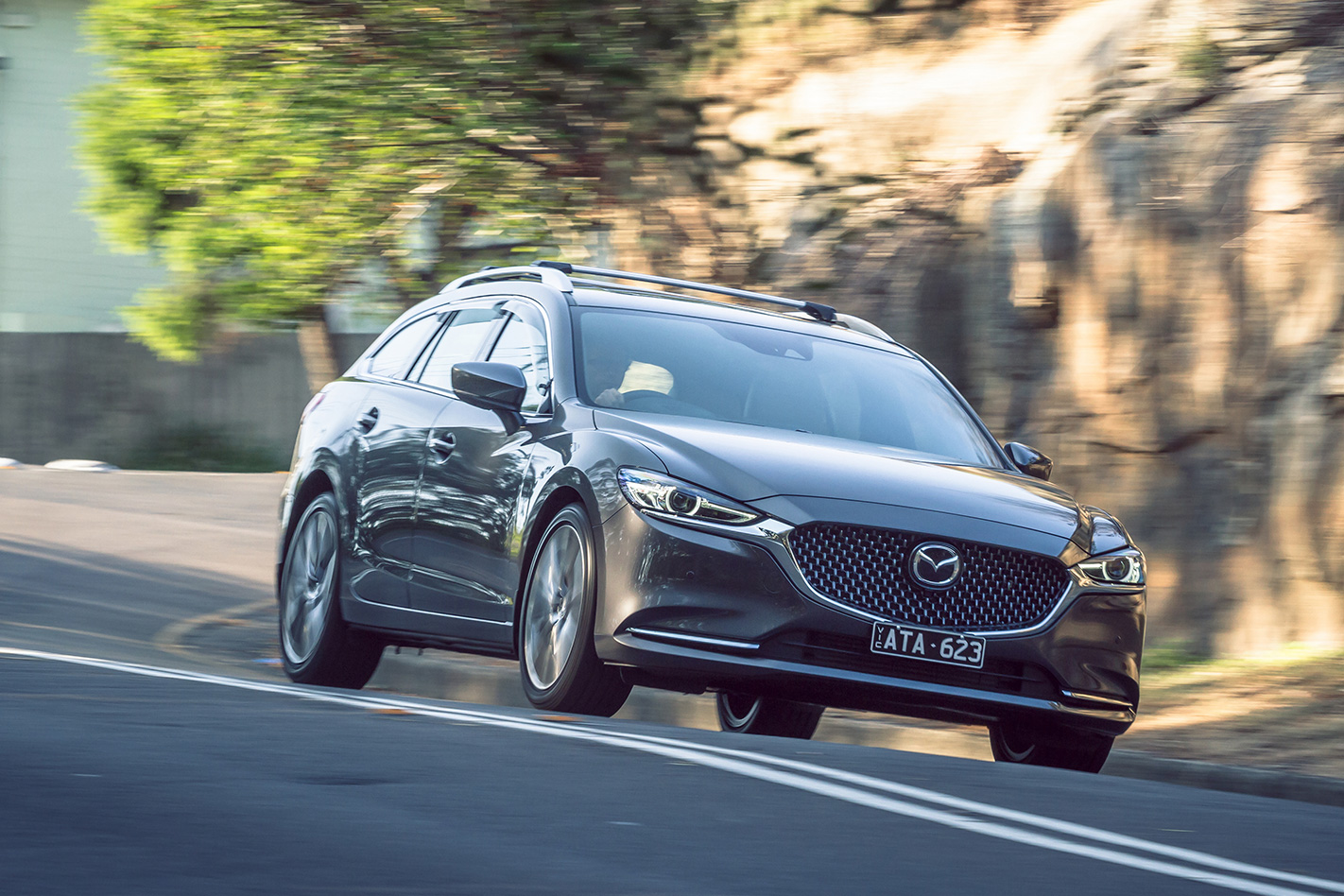
Buyers walking into the entry-level petrol- and diesel-engined Mazda 6 Sport and Touring-spec cars gain more for the same money as before. The atmo 2.5-litre direct-injection engine, which makes use of active shutters for better aerodynamics and cyl;inder deactivation for the first time, lifts its outputs by only 2kW and 2Nm to 140kW/252Nm, with a slight penalty to fuel use (7.0L/100km – up 0.4L/100km) on the combined cycle. Mazda claims the engine is no less efficient; more that its drivetrain calibration has focused on real-world driveability, to the slight detriment of its quoted economy number.
Buyers opting for the twin-turbo 2.2-litre Skyactiv-D diesel fare much better. Thanks to variable-vane turbo technology, its 140kW/450Nm is an 11kW/30Nm gain over the previous diesel 6, with fuel use falling 0.1L/100km to an official combined 5.3L/100km.
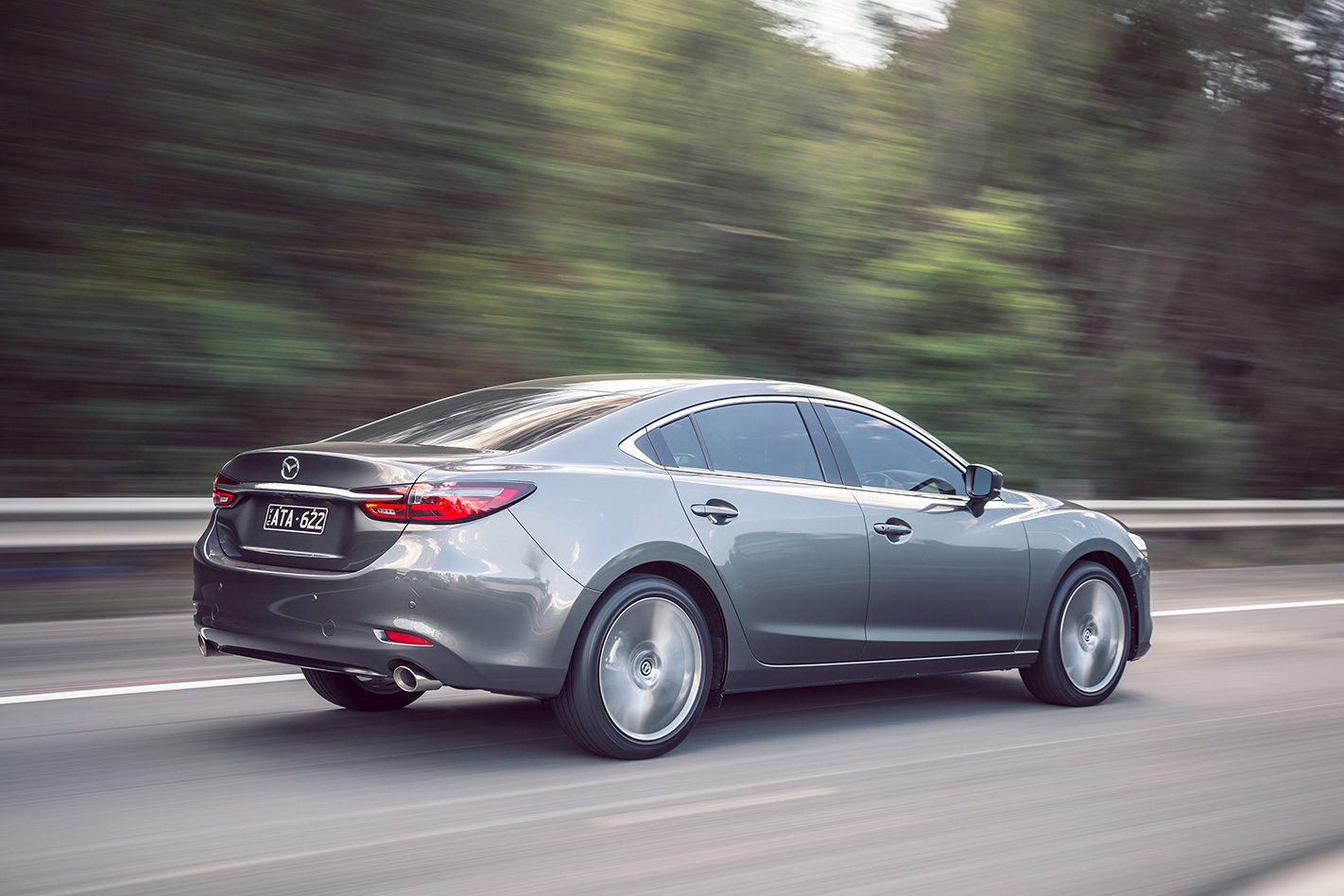
Back to that turbo petrol engine, though. You can only experience it in upper-level GT and Atenza-spec sedans (and, for $1700 more, the shorter-wheelbase wagons), with the cheapest, the GT sedan, starting at $43,990 and the most expensive (Atenza turbo wagon) stretching to $48,990. They’re sleepers, too, with no distinguishing badges to hint at the newfound under-bonnet potency.
The turbo Mazda 6 is like a breath of fresh (forced induction) air. Acceleration, best described as progressive in the atmo-powered version, is more urgent with turbo power, and provides decent in-gear acceleration up to 5400rpm before the carry-over six-speed auto shifts up a cog – well short of the indicated 6200rpm redline. Mazda Australia doesn’t quote an official 0-100km/h time, and with less than 700km on its odometer, our test car didn’t quite feel Kia Stinger 200-quick (7.0sec to 100km/h). But you could rightfully expect the turbocharged 6 to clock something in the high-sixes, given we’ve managed 7.5sec to 100km/h from the much-heavier front-drive CX-9, and a 7.6sec from an atmo Mazda 6 sedan in the past.
Step-off acceleration is helped by a turbocharger that, at low revs, feeds in air through a smaller opening, similar to putting a finger over the end of a hose to increase pressure and flow, minimising turbo lag. There’s some torque steer evident – manifesting itself as a light lateral tug on the steering wheel – but only if you’re being club-footed with the accelerator pedal.
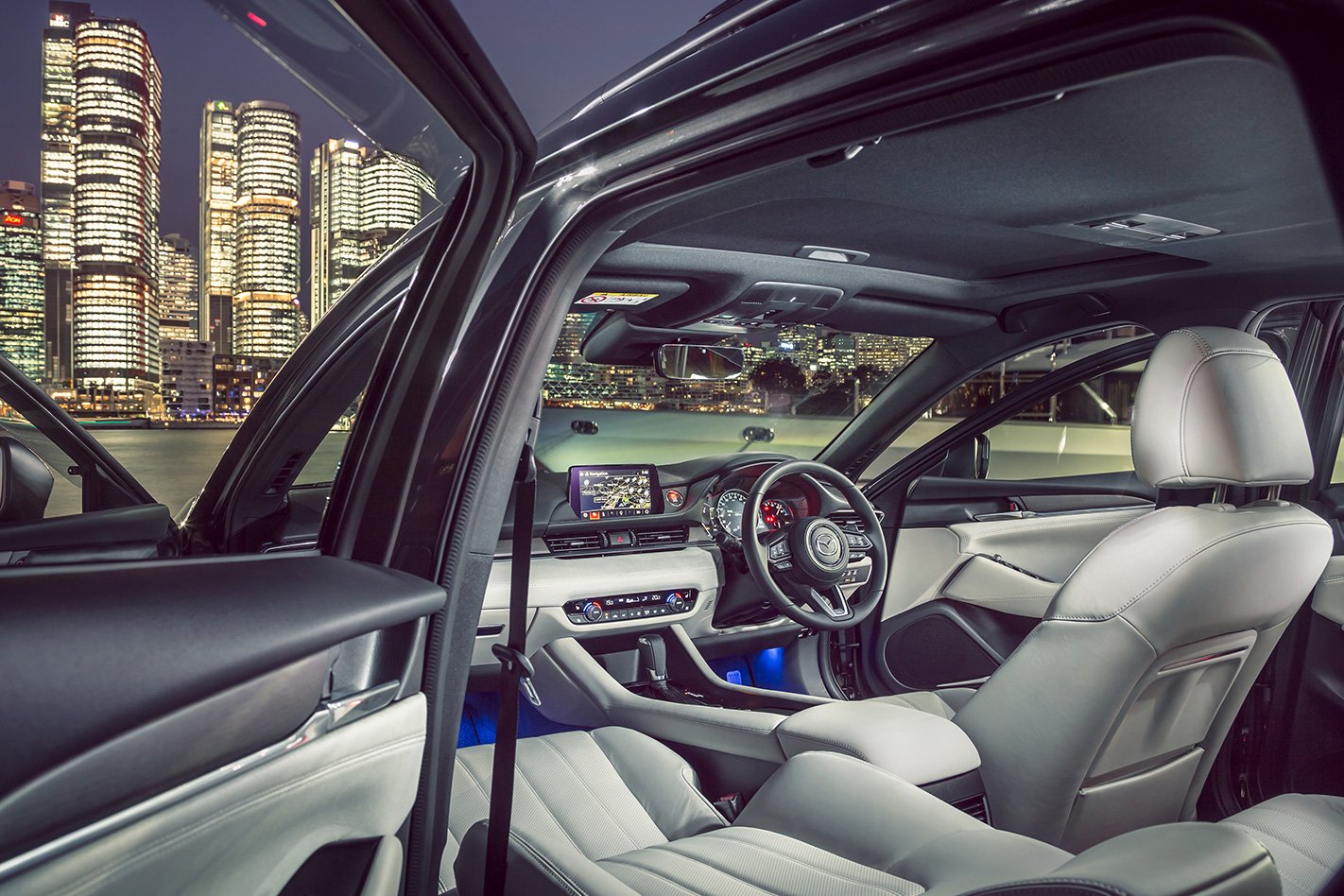
More noticable is how quiet and comfortable the 6’s cabin has become. Road refinement on Bridgestone Turanza 225/45R19 hoops isn’t class-leading, but it’s a hell of an improvement over the car this 2018 version replaces. Mazda’s engineers worked hard to eliminate reflected noise, filling gaps and holes to prevent sound transfer to the cabin. A different headliner absorbs more vibrations, the floor under the car is flatter and more aerodynamic, and active ducts on the front spoiler of the atmo 2.5-litre version of the 6 close to push air around the car, rather than through it, when cooling isn’t needed.
The way the Mazda 6 drives has also improved markedly. The steering box has a more rigid mount, making it more neutral in the hands of the driver, and the steering knuckles sit lower, making the front end feel more pointy. The lower arm also sits slightly higher. Anti-roll bars are bonded to the mounting bushes to improve rigidity; the front suspension geometry is changed to include rebound springs and 3mm-diameter-larger shock absorbers; front and rear damping valves have been tweaked; and the suspension has had its travel increased via revised bump stops.
Mazda claims the 6’s tendency to axle tramp is now well and truly “suppressed”, and it shows, with a smoothing of rough backroads, and even a section of dirt, on our drive route through central Victoria with what must come close to class-leading refinement. Only a little high-speed bounce, likely caused by the low-profile tyres on these road surfaces, flows through into the cabin.
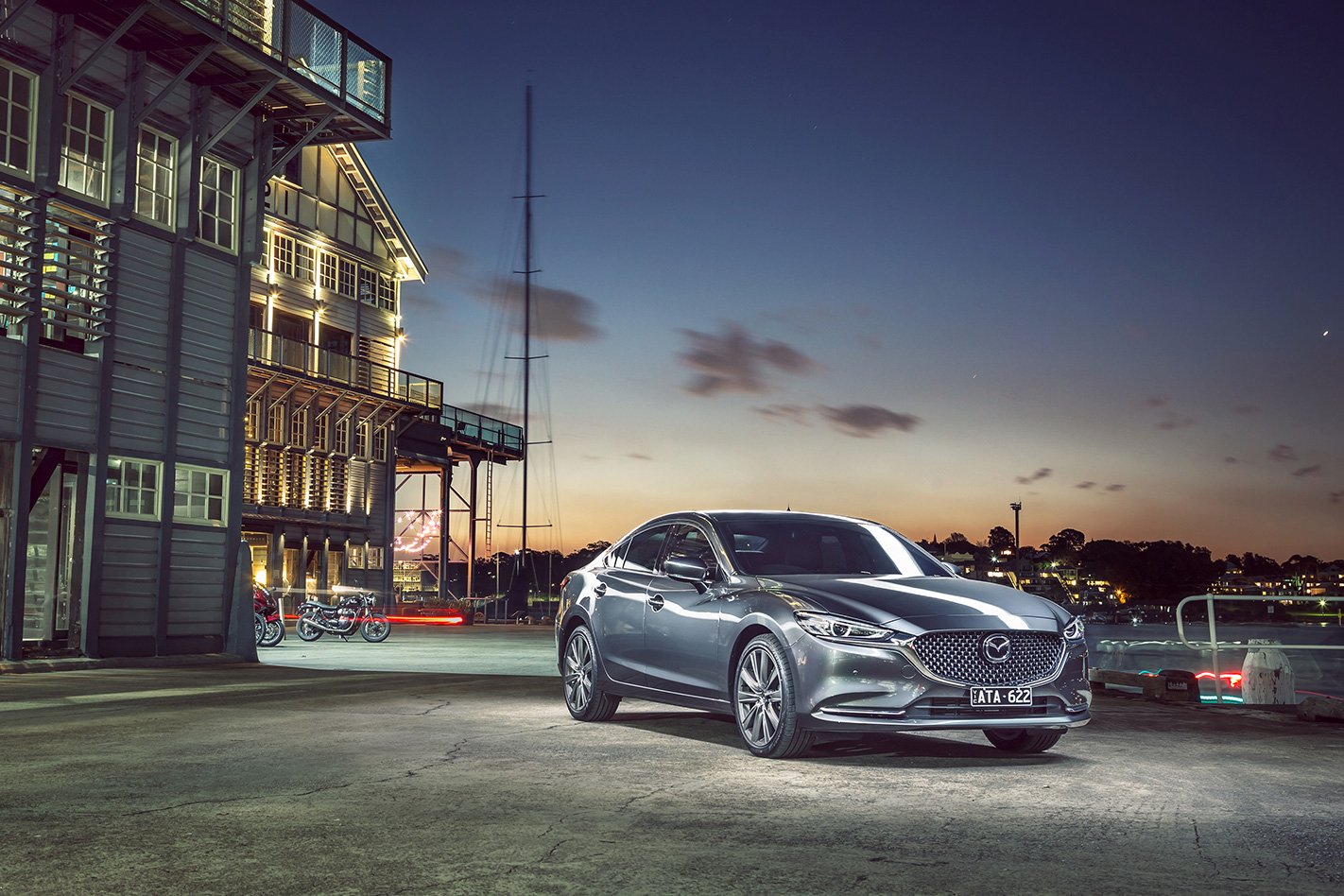
Missing from our drive route were enough twists to allow us to assess how much the turbo’s fluent dynamics have changed compared with the just-replaced atmo-only 6, given the forced-induction engine adds 60kg to the nose. Body rigidity is improved for this makeover, particularly around the cowl and front suspension, and the front floor of the passenger cell, which bodes well for the boosted 6’s cornering talent. The few corners we did attack hinted at a more engaging driving experience.
Early signs are the turbo version of the Mazda 6 is a promising thing. It’s something we’ll need to explore further once we get a test car through the garage with an engine that’s properly bedded in, but in the meantime, this is exactly the drivetrain the Mazda 6 was crying out for.
SPECS Model: Mazda 6 Atenza turbo sedan Engine: 2488cc 4cyl, dohc, 16v, turbo Max power: 170kW @ 5000rpm Max torque: 420Nm @ 2000-4000rpm Transmission: 6-speed automatic Weight: 1627kg 0-100km/h: 6.8sec (estimated) Fuel economy: 7.6L/100km Price: $47,690 On sale: Now

